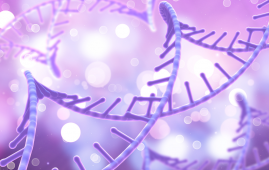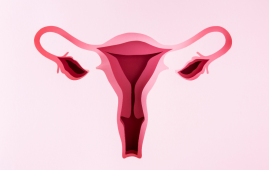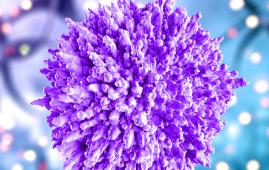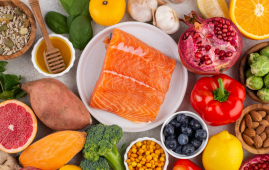

If your young child has a life-threatening peanut allergy, ongoing research suggests that they may be able to grow up and do the unthinkable: Eat and enjoy a peanut butter and jelly sandwich.
A treatment program designed for peanut-allergic preschoolers and babies has proven effective at helping children overcome their food allergy, says allergist Sandra Hong, MD. It is a life-changing – and perhaps life-saving – outcome.
Currently, more than 1 million children in the United States live with a peanut allergy and the knowledge that one bite of the food could be deadly. “For us to be able to help someone move past that — it’s the most rewarding part of our careers,” says Dr. Hong.
That optimism reflects the findings so far from an early peanut oral immunotherapy (EPOIT) treatment program developed at Cleveland Clinic, where Dr. Hong is Director of the Food Allergy Center of Excellence.
In the program, children age 4 and younger who are allergic to peanuts built a tolerance to peanuts by ingesting minuscule amounts of the food in a step-by-step, allergist-supervised process. Doses are increased gradually over many months.
This approach represents a reversal from clinical guidelines shared by allergists a decade ago. Let’s learn the reasons behind the change with Dr. Hong.
Facts about food allergies
Imagine starting every meal, every snack and every little nibble with the knowledge that one bite of the wrong food might kill you. That’s the life of someone with a severe food allergy.
A food allergy is a condition where your body’s immune system identifies a food (such as peanuts) as harmful. Your immune system launches into attack mode and releases antibodies to combat the threat.
The reaction can lead to hives, vomiting or – in worst case scenarios – constrict your airways and lead to death.
Food allergies symptoms in adults affect more than 32 million Americans, including nearly 1 in 9 adults. In schools, the average classroom can expect to have two students with a food allergy – and the numbers are rising.
Peanuts are one of the eight major food allergens that cause the most serious allergic reactions. More than 6.1 million people in the United States have a peanut allergy. It’s the most common allergy among children.
Approximately 200,000 people a year in the United States land in the emergency room due to a food allergy reaction, such as anaphylaxis. That’s equal to one ER trip every three minutes of every day.
Digging deeper into the numbers, more than 40% of children with food allergies have experienced a severe allergic reaction.
“It’s clear how serious the issue is,” says Dr. Hong.
Changes in food allergy treatment approach
As food allergy numbers began spiking in the 1990s, doctors recommended that allergenic foods such as milk, eggs and peanuts be removed from the diets of children with a high risk of allergies.
That thinking began to change, though, as research showed that eliminating specific foods did not slow the development of food allergies.
Then came the groundbreaking Learning Early About Peanut (LEAP) allergy study in 2015. The study found that the development of peanut allergies decreased in at-risk children with an early introduction of the food.
“It was completely the opposite of what we had believed,” notes Dr. Hong.
Next steps in peanut allergy treatments
Ongoing treatment programs aim to refine the treatment process that grew from the LEAP study, says Dr. Hong. More than 50 children with an identified peanut allergy are in the program.
The minimal goal is to help these children achieve at least “bite-proof” tolerance to peanuts, meaning they can consume nearly two peanut kernels without a reaction, says Dr. Hong. That protects against an accidental nibble of a food with peanuts leading to a health emergency.
Many participants, however, see their immune system response change so much that they can eat peanut products, says Dr. Hong. (Read about one child’s successful experience.)
The key is the age of the participants, as reactions to food allergens typically are less severe in early childhood. “Their immune system is so malleable, so flexible, that they can tolerate it,” notes Dr. Hong. “There is this narrow window where we can do this.”
The series of peanut challenges given to participants involve tiny amounts of the food. In the initial treatment cycle, for example, the daily dose is 8 milligrams of peanut protein.
Small increases follow every two weeks if there are no setbacks, says Dr. Hong. The process takes at four to six months, with maintenance dosing then continuing for at least a year.
Every uptick in peanut butter dosage takes place in an allergist’s office in case there’s a reaction. (“This is not something you do at home,” stresses Dr. Hong.) The child is monitored for an hour after the higher dose.
Of the children in the Cleveland Clinic program, more than 80% now possess “bite-proof” tolerance or are building up to that level.
The future outlook for children with peanut allergies
Currently, 1 in 5 children with a peanut allergy outgrows the condition before adulthood. Dr. Hong says advances in treatment could reverse those numbers, with as many as 4 in 5 children leaving their peanut worries behind with the boogeyman and other childhood fears.
The U.S. Food and Drug Administration approved a medication called Palforzia® to lessen allergic reactions to peanuts in children ages 4 to 17. It is the first treatment drug for children with peanut allergies.
Dr. Hong believes the number of children with severe peanut allergies will soon begin to decline. “We’re moving toward a cure,” she says, “and a lot less worry for families.”
more recommended stories
 CRISPR-Cas9 Gene Therapy for Prostate Cancer
CRISPR-Cas9 Gene Therapy for Prostate CancerIn their preclinical model, the researchers.
 Epilepsy Surgery: Rare Hemorrhagic Complications Study
Epilepsy Surgery: Rare Hemorrhagic Complications StudyFollowing cranial Epilepsy Surgery, hemorrhagic complications.
 Pediatric Epilepsy – Mental Health Interventions Unveiled
Pediatric Epilepsy – Mental Health Interventions UnveiledMental health challenges frequently manifest in.
 Neoadjuvant Chemotherapy Boosts Ovarian Cancer
Neoadjuvant Chemotherapy Boosts Ovarian CancerDuring the COVID-19 pandemic, US women.
 Brain Connectivity Unveils New Insights into Autism
Brain Connectivity Unveils New Insights into AutismBecause autism spectrum disease symptoms can.
 AI Tool Predicts Cancer Therapy Responses Using Tumor Cell Data
AI Tool Predicts Cancer Therapy Responses Using Tumor Cell DataWith over 200 types of cancer,.
 Nutrient Optimization: Vitamin D for Health
Nutrient Optimization: Vitamin D for HealthResearchers addressed the prevalence of vitamin.
 AD and Headache Disorders: Recent Findings
AD and Headache Disorders: Recent FindingsAtopic dermatitis (AD) patients may be.
 DASH Diet Reduces Cardiovascular Disease Risk in Breast Cancer Survivors
DASH Diet Reduces Cardiovascular Disease Risk in Breast Cancer SurvivorsA recent publication in JNCI Cancer.
 Myasthenia Gravis Treatment: Eculizumab & Ravulizumab
Myasthenia Gravis Treatment: Eculizumab & RavulizumabA recent study found that myasthenia.

Leave a Comment